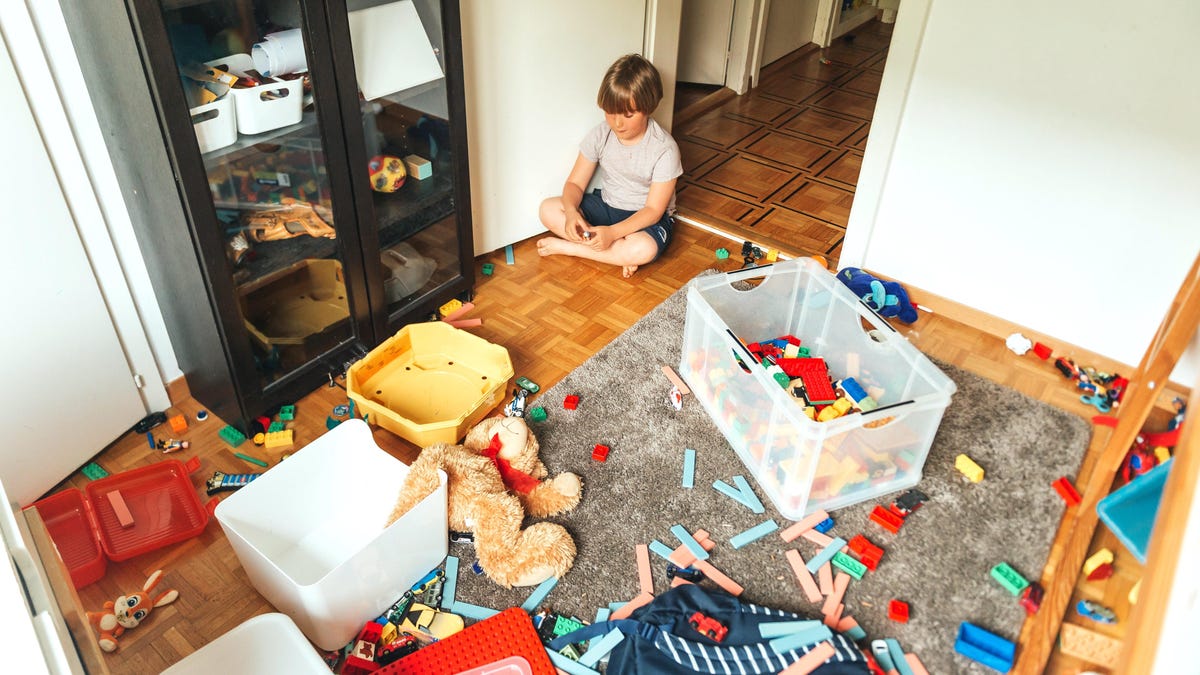The Easiest Way to Teach Any Child to Be More Minimalistic

I long ago gave up the fantasy that I could live in a minimal, orderly environment with two children. I declared us a family of maximalists and allowed piles of art projects, stuffed animals, building materials and books to grow like snowdrifts from the corners of every room. When I get tired of tripping over things, I fantasize about throwing it all in the trash.
However, as tempting as it may sound, throwing away your children’s toys while they are at school is not the best option.
“This often results in children feeling hurt, scared, anxious, and unable to trust you,” writes life coach Ellie Casazza in her book Tidy Like a Mother: A Guilt-Free and Stress-Free Way to Transform Your Home. . Your Life .
According to Casazza, people with minimalist fantasies can create order even if they live with children.
“Children ages 3 and older are old enough to participate in organizing their belongings with your guidance,” Casazza writes. Before you talk about their Beanie Boo collection, show them how you implement a decluttering plan and minimalism in your own items. As they get used to the idea of minimalism, you should think about how each child’s unique personality will determine their motivation to declutter.
Determine your child’s personality type
While developing a program to help parents and children get organized, Casazza learned from family therapist Amy Tirpak how to identify a child’s personality and type of motivation. Which type is right for your child?
Empathic and generous
- They understand other people’s feelings very well.
- They enjoy making other people happy.
- They are often good at sharing things.
Competitive
- They turn any activity into a game, race or challenge.
- They can turn even the simplest tasks into a competition.
- They compare themselves to others.
Motivated by money and things
- They love things and money.
- They always want something new.
- They find joy in shopping and shopping.
Emotional and attached
- They really love their things.
- They are attached to things regardless of their value.
- They believe that their toys have feelings.
Motivated by quality time
- They always want to be with their parents.
- They find it difficult to play independently.
- They may become impatient and complain that things are taking too long.
- They see household chores and tasks as an obstacle to spending time with you.
Introducing children to minimalism.
Casazza says her minimalist methods can free you and your children from the “overwhelming culture of materialism.”
“Start by determining what kind of childhood you will experience in your home,” she writes. Involve children in setting your childhood intentions. If the whole family agrees that your children’s values are, for example, curiosity, creativity, comfort and imagination, you now have a shared vocabulary to talk about what things are truly needed in their lives. When you’re ready to start decluttering your child’s room, your intention will be a guide to what to keep and what to throw away.
Tips for every type of child
If you are an empathetic and generous child, focus on how donating items brings joy to other children. They will be motivated to help others and make others feel good about themselves. While you’re tidying up with them, talk about what it would be like to imagine passing each toy to another child.
For competitive kids, turn tidying up into a game. Have them release an item in each color of the rainbow or guess how many donated items will fit in a particular box. Point out their strengths (such as quick decision-making, good organization, or focus) as they help you.
With a child who is motivated by money and possessions , focus on creating a space for his next birthday or holiday. If they are saving up to purchase, agree to donate a prorated dollar amount for each item cleaned.
If your child is emotional or attached , focus on respecting their feelings and attachments by helping them cope with the loss while explaining the need to let go. Listen and validate their attachment to objects.
If your child is interested in quality time , tidying up can be a special time for you to work together. As long as they get your attention, no further persuasion may be needed.
Before you get started, Casazza writes, make a plan and show your kids that you’re confident in the process. Match your play plan to your child’s personality, maintain a fun and positive attitude, and redirect his attention to the wonderful things he keeps.